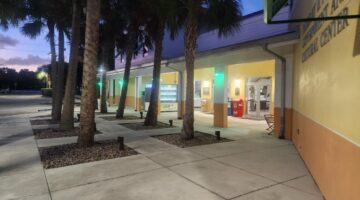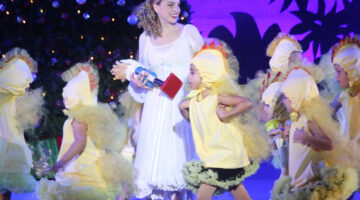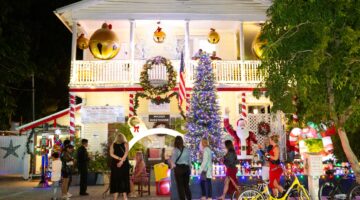A Different Light at TSKW
Features Key West gay artists
Documenting the legacy created in the 1970s by gay artists is the theme of “A Different Light – Gay Artists and the Making of Key West,” the colorful exhibition whose genesis was suggested by Matthew Helmerich and Jeffrey Harwell. Providing an interesting historical perspective of life on the island decades ago through the eyes of a former art dealer, the show traces the contributions of a number of talented artists whose exuberance and spirit are credited with reawakening Key West’s cultural life. Now on view at TSKW on White Street, the exhibition continues to Feb. 14.
Curator Dianne Zolotow suggests that a group of gay artists (all men, at least in this show) were “drawn here several decades ago by abundant light, inexpensive studios and housing, and the island’s reputation as an artistic center.” The artists are credited with “introducing the island to new visions of contemporary culture, politics, and beauty.”
The exhibition introduction provides a bit of subjective history: “In the late sixties and early seventies, Key West had a tired, abandoned air … the military had withdrawn almost all its forces, many storefronts were boarded up and the gallery scene was almost moribund. But the Pier House — the first new hotel in decades — began attracting new visitors. Word of mouth got out about Key West’s tolerant attitude toward gay tourists.”
The show credits a “gay artists’ community” with producing a “Key West Renaissance” by bringing writers, acting groups and musicians to town; and in turn new home buyers whose renovation/restoration projects changed the real estate landscape. There is mention of Key West’s landmark election of a gay mayor, Richard Heyman — one of the first openly gay politicians in the country. Heyman’s support of the island’s young gay artists – including many in this exhibition — through his own Gingerbread Gallery is recalled.
Given the show’s introduction, viewers might ponder how the works on view support its conclusions, but the role any of these artists individually played in the town’s revival isn’t really the point. There is no question that artists – gay and straight – often pioneer forgotten places, paving the way for followers. Key West, an enchantingly decayed backwater and good fishing spot, was certainly less popular back then. For adventurous gays, it was a perfect place to hide and seek like-minded souls, a languid laid-back town with an intriguing literary cache, a paradise they could claim as their own.
Reflecting the celebratory and sensual atmosphere, the art on view brings the mood and tempo of those years into focus. Key West’s beguiling light is here in Craig Biondi’s “Dick Dock” painting, its sun-bleached glow reflecting a hot afternoon. His figures set the tone, though other works head in different directions. For Biondi fans, his paintings at the Art and Historical Society’s Customs House, on view in the vast halls of that handsome structure, are worth a visit.
But there is also a dark side to some works, seen in several outstanding small abstract paper collages by Thom Szuter. These are seriously elegant but somber pictures that catch the eye not with blazing color – they are nearly monochromatic – but finely juxtaposed paper bits that pull the viewer in for closer study. A major painting by Piero Aversa, a man whose international travels brought an offbeat sensibility to his work, is more contemplative and serious than it first appears.
The artists featured here, along with Heyman himself, found a welcome home in Key West to shape as their own. Sadly, many died of AIDS. Zolotow has curated a show that makes a fitting tribute to their talents and their cultural impact on the island as it began to shift from sleepy to chic. This show rewards those who look carefully to discover a heady – but sadly brief – moment in the island’s history.
[livemarket market_name="KONK Life LiveMarket" limit=3 category=“” show_signup=0 show_more=0]




Thank you, TSKW, Dianne Zolotow and Messrs. Helmerich and Harwell for this lovely glimpse back in time of our little island city. I am a late comer to Key West so any insight into how we became “one human family” is of special interest to me. The work in the show stands firmly on its own, but with the historical significance of these pioneering artists and their contributions to the renaissance of Key West, you would be doing yourself a disservice if you miss this.